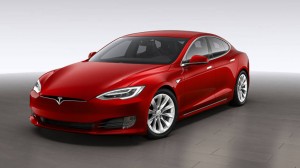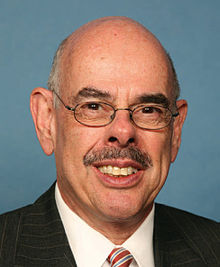Trump’s EPA just announced its intent to roll back fuel economy standards for all light-duty vehicles (passenger vehicles and trucks) between 2022 and 2025. The original standards were finalized in 2011 under the Obama Administration and in concert with California’s independent greenhouse gas standards for tailpipe emissions, with a goal of 54.5 miles per gallon vehicles by 2025. They would have saved 540 million metric tons of carbon dioxide emissions and 1.2 billion barrels of oil over the vehicles’ lifetime, according to government estimates.
EPA’s decision to loosen these standards will likely be challenged in court, notably by states that have adopted the stricter California standards. California adopted these standards pursuant to a waiver it received from the federal government under the federal Clean Air Act, which reserved for California the authority to develop air quality standards more stringent than federal ones. The waiver provision was included in the original act in recognition of the state’s unique air quality challenges and history as a pioneer in this area of regulation.
So what happens now? There are three potential outcomes:
- The state lawsuits are successful and the proposed rollback is delayed until a new administration takes over that is more interested in protecting the environment and public health over industry profit.
- The federal rollback is finalized and the country ends up with two markets for vehicles: a clean car market in California and the dozen states that have adopted the California standards, and a dirty car market in states that don’t have these higher standards. This outcome is not good for automakers, as they’d have to develop separate, cleaner cars for the California-led market. And it might be bad for consumers in these states who may lose access to some vehicles that would otherwise have been clean enough to sell in the California-led market.
- The federal rollback is finalized and the EPA tries to revoke California’s authority to set its own tailpipe standards. Never in history has an EPA administrator tried to revoke an existing waiver, but it seems likely that EPA chief Pruitt will try. My colleague Ann Carlson described the environmental and legal stakes with such a move. If the waiver is revoked, California will have a difficult time trying to achieve its near-term climate goals.
As with everything regulatory in nature, we’ll have to wait and see how the legal process plays out. But if EPA is successful in rolling back these standards, the agency will undermine the fight against climate change, increase toxic air pollution and attendant public health impacts, cost drivers money in terms of having to buy more gasoline for the same amount of driving, and diminish U.S. automaker competitiveness with international rivals who fully embrace more fuel-efficient and zero-emission vehicles.
 Yesterday I asked if Trump could stop the clean technology momentum. Part of that discussion relates to electric vehicles, and Rani Molla and Liam Denning in Bloomberg make the optimistic case that Trump can’t stop the transition to EVs:
Yesterday I asked if Trump could stop the clean technology momentum. Part of that discussion relates to electric vehicles, and Rani Molla and Liam Denning in Bloomberg make the optimistic case that Trump can’t stop the transition to EVs:
Even if U.S. federal regulations loosen, the country accounts for only a fifth of global vehicle sales. And other regions, especially in fast-growing Asian markets such as China and India, have reasons of their own to demand more efficient vehicles, ranging from heavily polluted cities to national security (why embrace ever-increasing dependence on foreign oil?). Don’t forget, also, that roughly one of every eight new U.S. vehicle registrations is in California, which is allowed under the Clean Air Act to set more stringent fuel-efficiency targets than the feds.
But maybe we shouldn’t be so optimistic that Congress won’t interfere with California’s emissions policies. As E&E News reports [paywall]:
Then there’s the issue of the state’s Clean Air Act waiver. California has an EPA-granted waiver under the federal Clean Air Act, which allows the state to set its own rules for vehicle emissions. Eleven other states follow that policy. Many automakers comply with California’s rule, rather than build cars for just a few states.
Each time it’s renewed, EPA gets to take another look, said Kathryn Phillips, director of Sierra Club California.
“I actually worry that they’re going to go into the Clean Air Act and take out the aspect of it that has allowed California to act independently on tailpipe emissions,” Phillips said. “That’s the place where we’ve had some of the greatest impact on air pollution, not just in this state but around the world, because California has the ability to call for tighter emissions controls from auto manufacturers.”
As with the future of renewables, we’re in a wait-and-see mode. And it’s true that global commitment to electric vehicles is only getting stronger. But at this point, at least here in the United States, no environmental policy is secure.
 Former Representative Henry Waxman breaks down the options for the president’s final 18 months in office:
Former Representative Henry Waxman breaks down the options for the president’s final 18 months in office:
Executive authority, especially under the Clean Air Act, provides numerous paths for meaningful climate action. It can deliver popular, pro-growth, business-friendly pollution reductions that today are not possible through legislation. That is the legacy of one of our most important laws, and it can shape the legacy of this administration and the next.
Waxman goes on to list potential options to reduce emissions in aviation, cars and trucks, and other industrial sectors outside of electricity. It’s worth reading the whole thing.


